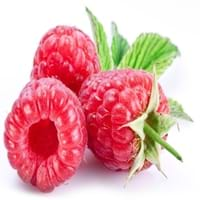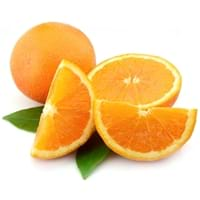Health Benefits
Cancer prevention, Heart care, Prevents macular degeneration, Reduces blood circulation problems
Arthritis treatment, Cancer prevention, Heart care
General Benefits
Anti-inflammatory properties, Controls blood sugar levels, Digestive aid, Eye care, Helps in weight loss
Anti-inflammatory properties, Cures cough, Cures fever, Digestive aid, Healing of wounds, Maintains healthy cholesterol level
Skin Benefits
Anti-aging benefits, Brightens and lightens complexion
Anti-aging benefits, Brightens and lightens complexion, Reduces wrinkles, Treatment of dark spots
Hair Benefits
Acts as moisturizer, Regulates hair growth, Shiny hair
Promotes longer and healthier hair, Protects hair, Rejuvenates scalp, Shiny hair
Allergy Symptoms
Breathing difficulty, Eczema, Hives, Itching, Nasal congestion, Runny nose, Sneezing, Watery eyes, Wheezing
Abdominal cramps, Hives, Itching, Nausea, Wheezing
Side Effects
Allergic reaction
Allergic reaction, Skin rash, Possibly unsafe during pregnancy
Best Time to Eat
Best if taken as a breakfast (or empty stomach), As a snack in the late afternoon, Don't eat after meal, Morning time (before lunch)
As a snack in the late afternoon, Eat the fresh ones, avoid mixing with any other foods, don't eat after meal., Morning time (before lunch), Strictly avoid empty stomach
Vitamin B5 (Pantothenic Acid)
Vitamin C (Ascorbic Acid)
Vitamin K (Phyllochinone)
Calories in Fresh Fruit with Peel
Not Available
Calories in Fresh Fruit without Peel
Not Available
Calories in Frozen Form
Not Available
Varieties
Amity, August Red, Boyne, Canby, Caroline, Comet, Dinkum, Dorman Red, Latham, Meeker, Black Hawk, Hayda, Lauren, Meeker and Latham
Clementine, Dancy, King Mandarin, Murcott, Ponkan, Robinson, Satsuma and Sunburst
Color
Black, Purple, Red, Yellow
Orange
Origin
Europe, North Asia
South-Eastern Asia
Grows on
Trees
Not Available
Soil Type
Sandy loam
Well-drained
Climatic Conditions
Cold
Sunny
Facts about
- There are more than 200 varieties of raspberries.
- In USA, 90% of the raspberries are grown in Washington, California and Oregon.
- They do not ripe after they are picked.
- A raspberry contain 100 to 120 seeds.
- It is known by another name ' Mandarin'.
- Oil extracted from its peel is used in various skin and hair care products.
- Tangerines is also known as the ‘Christmas Orange’ because it is used to stuff kids' stockings..
Spirits
Yes
Not Available
Cocktails
Yes
Not Available
Top Producer
Russia
China
Other Countries
Azerbaijan, Canada, Mexico, Poland, Serbia, Spain, Ukraine, United Kingdom, United States of America
Brazil, Iran, Italy, Japan, Korea, Morocco, Spain, Turkey
Top Importer
United States of America
China
Top Exporter
Poland
Spain
Botanical Name
Rubus Idaeus
Citrus reticulata
Synonym
Not Available
Citrus clementina or Citrus nobilis
Subkingdom
Tracheobionta
Tracheobionta
Division
Magnoliophyta
Magnoliophyta
Class
Magnoliopsida
Magnoliopsida
Species
R. idaeus
C. reticulata
Generic Group
Rose
Citrus fruit
Difference Between Raspberry and Tangerine
We might think that Raspberry and Tangerine are similar with respect to nutritional value and health benefits. But the nutrient content of both fruits is different. Raspberry and Tangerine Facts such as their taste, shape, color, and size are also distinct. The difference between Raspberry and Tangerine is explained here.
The amount of calories in 100 gm of fresh Raspberry and Tangerine with peel is 53.00 kcal and Not Available and the amount of calories without peel is Not Available and 53.00 kcal respectively. Thus, Raspberry and Tangerine belong to Low Calorie Fruits and Low Calorie Fruits category.These fruits might or might not differ with respect to their scientific classification. The order of Raspberry and Tangerine is Rosales and Sapindales respectively. Raspberry belongs to Rosaceae family and Tangerine belongs to Rutaceae family. Raspberry belongs to Rubus genus of R. idaeus species and Tangerine belongs to Citrus genus of C. reticulata species. Beings plants, both fruits belong to Plantae Kingdom.









